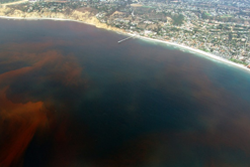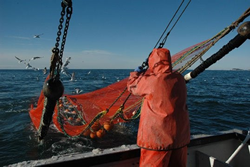Problems with Open-Water Shrimp, supplies are being exhausted.
Shrimp is by far the single most consumed seafood in the world. According to the National Marine Fisheries Service, the world consumes approximately 9 billion pounds of shrimp annually, with about 1.8 billion consumed in the United States alone. Approximately 45% of the global supply of shrimp is caught by ocean trawlers while the other 55% is produced by open air shrimp farms, mostly in developing world countries. Both of these production methods are unsafe, unsustainable and ecologically destructive. NaturalShrimp not only addresses these issues, it offers a better industry solution.
Chemicals used to keep shrimp fresh
Once shrimp are caught in the open water, they are dipped in sodium triphosphate and flash frozen to slow the flesh decay process. This chemical is currently considered safe today. These chemicals are not natural, and they are in most of the “open-water” catch.
All seafood stocks are under strain.
US Gulf Coast has suffered from algal bloom / dead zones several times in the last several years – disrupting supply chain.




Ocean trawling shrimp boats use large nets to catch their shrimp. Not only are these nets toxic, they disturb sensitive ocean-bottom ecosystems and in the process, catch a large variety of non-shrimp sea life which is typically killed and discarded. The world’s oceans can only supply a finite amount of naturally occurring shrimp each year. With global populations surpassing 7.5 billion and domestic consumption alone growing at 10%, it’s no wonder why global demand is outstripping the natural supply of shrimp. This is clearly an unsustainable production paradigm.
Problems with Standard Shrimp Farming
Coming from countries with sub-standard safety / Cleanliness protocols
- 94% of all shrimp consumed in the United States is imported from abroad mainly from Asia and Latin America.
- There are also labor issues – many claims of indentured and abused workers.
Toxic Chemicals / Antibiotics Used / Risk of Disease
- Only 0.7% of the shrimp is ever tested
- There are also labor issues – many claims of indentured and abused workers.
- In 2015, Consumer Reports conducted their own testing and found 16% of cooked, ready-to-eat shrimp had bacteria, including vibrio and E. coli.
- Vibrio was found on many shrimp samples – the most common cause of food poisoning from eating raw oysters.
Shrimp farming, or aquaculture, has ostensibly stepped in to fill the global demand/supply imbalance. However, the currently preferred open-air method (man-made shrimp ponds connected to open ocean) of cultivating shrimp is usually done in developing countries where poor farmers have little regard for the ecosystem or the consumer. Because of this, farmers will use large quantities of antibiotics and dangerous levels of chemicals to try and maximize their crop. Open-air systems are environmentally destructive, can create widespread viral outbreaks that can wipe out an entire region’s shrimp production and have high chemical contamination levels that make it unsafe for human consumption.
NaturalShrimp’s production facilities will be the aquaculture industry’s truly eco-friendly, sustainable way of cultivating shrimp in high density environments. Its closed system production methods will produce fresh, gourmet grade shrimp without use of antibiotics, pollutants and other chemicals or without further depleting the world’s oceans from overfishing.
